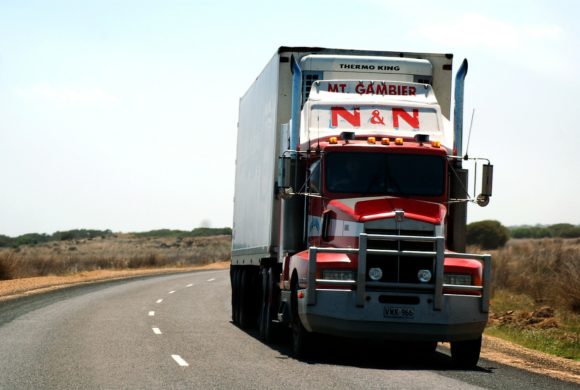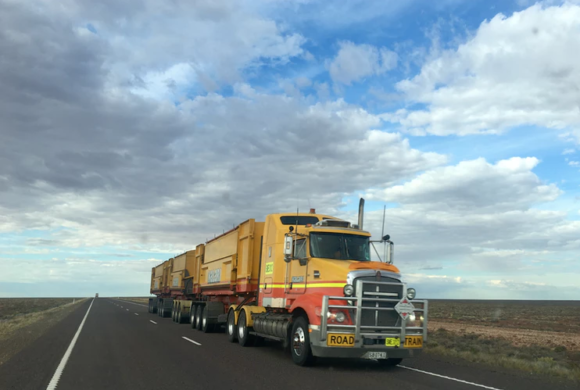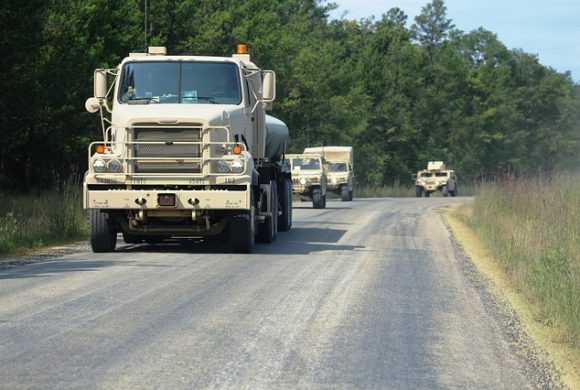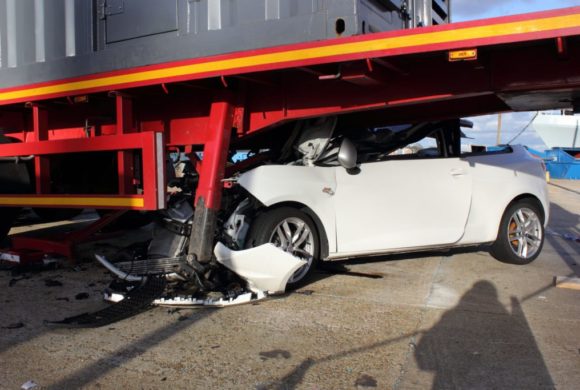
by Queener Law | Oct 19, 2017 | Tennessee, Trucking Accident
Of the many potential causes of truck accidents in Tennessee, regulatory violations are some of the most frequently occurring. The Federal Motor Carrier Safety Administration has strict regulations in place that are geared toward reducing the risk of trucking collisions, but many drivers and carriers violate the rules in an effort to get their loads to their destinations in time. When a truck collision results from a trucking violation, a truck wreck attorney may argue a prima facie negligence claim against the responsible drivers and their employers.
Common Trucking Industry Violations
The FMCSA has established multiple rules that are meant to reduce the risk of trucking accidents. When large trucks cause collisions, victims are much likelier to suffer devastating injuries or fatalities. As a result, the industry is strictly regulated.
Drivers are only supposed to drive a certain number of hours per day, and they are supposed to take a minimum number of required breaks. There are also regulations concerning what the drivers are allowed to do while they are driving and rules about the frequency of maintenance and inspections of the trucks.
Under the law, drivers are only supposed to drive for 11 hours out of 14 with three extra hours designated for other activities, including eating, refueling, and others. They are also supposed to get a minimum of 10 hours off for rest before beginning new shifts. When drivers violate these hours of service rules, they may be fatigued. This heightens the risk of accidents caused by tired truck drivers.
The FMCSA also prohibits truck drivers from using their hands to make phone calls or to text while they are driving. Drivers who are caught texting, reading texts or talking on the phone while driving face substantial fines. They are allowed to talk on hands-free devices, however.
Truck companies are supposed to conduct regular inspections of their fleets. They are also supposed to follow regular maintenance schedules and to make prompt repairs. Drivers who pull over to have their required inspections will be fined if there are violations that are discovered. Road-side inspections involve looking at the brakes, load securement, exhaust system, lights, and tires. The inspectors also review the drivers’ licenses, logbooks, and paperwork to ensure that drivers and their vehicles are in compliance with the law.
Adhering to safety regulations is important for preventing accidents and saving lives. Violating the rules may cause serious accidents, harming others.

by Queener Law | Sep 19, 2017 | Colorado, Kentucky, Tennessee, Trucking Accident
While many truck accidents are caused by driver mistakes, some result because of defective parts on vehicles. According to the Federal Motor Carrier Safety Administration, almost 30 percent of accidents involving large trucks happen because of part failures. Identifying the parties who are responsible in cases involving defective components can be complicated. Victims may need to get help from expert witnesses who can demonstrate the link between the failed part and the accident’s cause. A truck accident lawyer may work with experts and investigators to help to prove liability and causation.
Common Truck Component Defects
There are a number of different defects that can lead to serious truck collisions. The FMCSA reports that brake failures are one of the leading causes of accidents related to defective parts. Other component defects that may lead to accidents include lighting problems, door and hood failures, wheel defects, engine or transmission failures and attachment system failures. Any of these defects may lead to serious accidents involving the trucks alone or other vehicles.
Defect Categories
In cases involving defective parts, there are three primary categories of defects. These include design defects, manufacturing defects and maintenance issues. Components that have design defects are parts that have problems in their initial designs, causing them to not function as intended. Parts that have manufacturing defects are made incorrectly, causing them to fail. Poorly maintained parts can also lead to failures and accidents. Companies are supposed to routinely inspect and maintain their trucks. When they fail to do so, the companies may be liable for resulting lawsuits. Some companies contract out their repair and maintenance work to third-party contractors. In those cases, the third-party repair and maintenance companies may be named as the defendants in resulting lawsuits.
Damages
People who are seriously injured in truck accidents may suffer both economic and noneconomic losses. By filing lawsuits against the responsible parties, they may recover compensation for both. The amount of damages that might be available in a case will vary depending on the losses and on what happened. Before agreeing to accept proposed settlements, it is important for people to understand how to correctly value their claims. Determining the potential claim value should include calculations of past and future medical costs, past and future lost earnings, pain and suffering, disfigurement and others. A truck accident lawyer may help to value a claim by calculating damages in the various categories.

by Queener Law | Sep 13, 2017 | Colorado, Kentucky, Tennessee, Trucking Accident
Trucks that are used to transport hazardous materials pose much greater dangers than do other large trucks, including toxic exposures, fires, environmental damage, and explosions. Because of the risks, trucking carriers must carry higher liability insurance coverage on their hazmat trucks. The Federal Motor Carrier Safety Administration regulates the transportation of hazardous materials and it classifies them into nine different categories.
Hazardous Materials Categories
When a truck is transporting a hazardous material, the material and the truck must be properly marked and classified. The FMCSA classifies the materials as explosives, flammable liquids, flammable solids, gases, oxidizers, poisons, radioactive material, corrosives and miscellaneous hazardous materials. By requiring markings on trucks that identify the classes of materials that they are transporting, the FMCSA is trying to make certain that other motorists understand the dangers that the chemicals pose. They also are meant to help first responders and law enforcement officers who respond to truck accidents and spills.
Accident Dangers with Hazmat Trucks
When truck accidents involving trucks that are transporting hazard chemicals happen, spills may occur. The dangers that the chemicals pose to other motorists depend on what they are. Accident victims may suffer chemical burns or thermal burns. They may be injured or killed in explosions, suffer amputations, suffer poisonings or be exposed to cancer-causing agents. In addition, some chemicals that seep into the ground may be radioactive, placing everyone who lives in the area at risk of harm if the chemicals get into the water supply.
Common Hazmat Truck Accident Causes
While accidents may be caused by many different things, there are several common causes of accidents involving trucks carrying hazardous materials. One of the most common problems happens because of improperly securing the material when it is loaded. Loads that are not secured properly may be likelier to spill or to roll away from the truck. If they shift, they may also be likelier to explode. Driver errors are also common causes of hazmat truck accidents. Drivers who turn left too fast, speed, follow other vehicles too closely or drive while they are distracted or impaired place others at risk of accident involvement.
When hazmat accidents happen, the victims may be permanently disabled or disfigured and they may also die. A semi truck accident lawyer represents victims and their families in the recovery of damages from hazmat accidents.

by Queener Law | Aug 21, 2017 | Colorado, Kentucky, Tennessee, Trucking Accident
A proposed rule that would have required truck drivers to submit to screenings for sleep apnea has been withdrawn by the Department of Transportation. The rule faced fierce opposition from truck drivers and some members of the trucking industry. The rule would have offered clarification to carriers and medical examiners concerning when truck drivers should be referred for sleep apnea testing. The Federal Motor Carrier Safety Administration published a notice on Aug. 4, 2017, announcing its withdrawal of the rule.
Rule Withdrawal
The FMCSA has been working on the sleep apnea rule protocol since 2016. It asked for input from the industry about when referrals should be made in its pre-rule notice. The Motor Carrier Safety Advisory Committee and the MRB recommended that truck drivers whose body mass indices exceeded 40 should be referred for sleep apnea testing. Truck drivers were overwhelmingly against the proposed rule because it would have required a large number of drivers to be tested because of age and weight requirements. The rule withdrawal also comes in an anti-regulatory environment under the current administration. Federal agencies have been asked to get rid of two regulations for every new one that is proposed.
Why the Sleep Apnea Rule Was Proposed
Untreated sleep apnea has been demonstrated to have a strong correlation with dangerous driving. In one study that was presented at the Sleep and Breathing Conference in Berlin on April 12, 2013, the researchers found that people who have sleep apnea are likelier to report falling asleep behind the wheel and to fail driving simulator tests. This study as well as others that demonstrate that drowsy and fatigued driving may be nearly as dangerous as drunk driving have long been a concern for safety experts. A truck accident lawyer sometimes handles injury cases involving truck drivers who fell asleep at the wheel.
What Is Sleep Apnea?
Sleep apnea is a disorder in which the muscles of the upper airway become so slack that the opening through which breathing occurs is cut off. This causes the sufferers to startle and wake slightly, and the pattern may repeat itself frequently throughout the night. Sleep apnea sufferers may thus get little quality sleep, making them drowsy during the daytime. A truck accident lawyer may investigate an accident to determine whether or not a driver had sleep apnea, causing the resulting injury accident. Doing so may help to prove the driver’s fault.

by Queener Law | Jul 11, 2017 | Colorado, Kentucky, Tennessee, Trucking Accident
Recent studies reveal that many of the serious, life changing and even deadly injuries every year caused by underride crashes can be minimized or prevented completely with the use of a new safety device. The product, known as AngelWing, is a side underride guard that is specifically designed to prevent passengers in smaller vehicles from suffering serious injuries or death in the event of a side collision with a large truck.
According to recent statistics, more than 200 victims are killed and even more are seriously injured by underride accidents in the United States every year. While federal law requires semi trucks to have rear underride guards in place, side guards are not currently required. And despite reports by the National Traffic Safety Board (NTSB) that conclude that side guards would reduce the risk of injury and death on America’s roadways, and their recommendation to the National Highway Traffic Safety Association (NTHSA) that all new truck trailers be equipped with side underride protection, the Truck Trailer Manufacturers Association continues to oppose such a requirement. The industry’s lobbying arm cites the additional costs, various technical challenges, and the concern that these side guards could add significant weight to a trailer or dangerously weaken its parts.
An Effective Solution for Semi Truck Underride Crashes
Approximately 62 percent of a large truck trailer’s length is protected when side underride guards are in place. Without these guards, only about 15 feet are protected. And while many semi trucks are currently equipped with composite side fairings, they are not designed to withstand the impact of a crash.
A recent study by the Insurance Institute of Highway Safety (IIHS) evaluated the effectiveness of AngelWing guards in 35 mph. side collisions versus side fairing skirts that were designed to enhance aerodynamics only. The results were dramatic, with the AngelWing guards preventing the smaller test vehicles from moving underneath the large truck, and the composite side fairings allowing the cars to slide under the trailer. When the car passed under the truck trailer, part of the roof of the smaller vehicle was sheared off and the car became wedged beneath the truck. If the simulations had included moving vehicles, those without AngelWing protection could have resulted in overturned trailers or the vehicle coming into contact with the rear axles. In real life, this type of crash would likely have caused severe, disabling injuries or fatalities.

by Queener Law | Mar 14, 2017 | Colorado, Kentucky, Tennessee, Trucking Accident
The Federal Motor Carrier Safety Administration (FMCSA) requires regular safety inspections and maintenance for commercial trucks. Violations result in trucking accidents and personal injury claims that require truck accident attorneys.
Safety and Maintenance Regulations
The FMCSA requires all motor carriers to perform systematic inspections, maintenance, and repairs on commercial motor vehicles to ensure safe operations. For commercial vehicles, motor carriers must maintain inspection and repair records for each vehicle. Truck drivers are required to complete a written inspection report at the end of each driving day. The report must identify the vehicle and list any deficiencies or defects that may affect operational safety. The motor carrier must then certify that those deficiencies or defects are corrected.
Common Maintenance Safety Problems
Two of the most common safety issues that cause serious trucking accidents are faulty brakes and bad tires. In Tennessee, truck accident attorneys often see serious crashes and injuries caused by large trucks unable to stop in time to avoid accidents and sudden tire blowouts.
Faulty Brakes
According to the FMCSA, faulty brakes are responsible for at least five percent of all truck accidents. Due to the weight of large commercial trucks, standards for brake safety is highly regulated by the federal government. The responsibility for maintenance falls to the truck driver, who is required to inspect the vehicle each day, as well a maintenance specialist who can check for broken or missing parts and air leaks in the brake chamber. Vehicle manufacturers are also responsible for the safety of a truck’s braking system. If a truck’s brakes can’t decelerate it at a rate proportionate to the vehicle’s size, even when maintained properly, liability for the truck maintenance accident may lie with the manufacturer.
Bad Tires
Improper air pressure, worn treads, and mismatched tires contribute to serious trucking accidents seen by truck accident attorneys. The massive weight of commercial trucks — typically 10,000 to 50,000 pounds — requires properly inflated and maintained tires to ensure safe maneuverability and even weight distribution. Improper air pressure, worn treads, and mismatched tires can compromise the safety of the truck, resulting in tire blowouts and serious accidents. Truck drivers are responsible for inspecting their tires for air leaks, tread wear, and sidewall damages. Trucking companies are required to make sure that tires meet federal requirements for tread depth and ensure that drivers do not pair bias and radial tires on the same axle.






